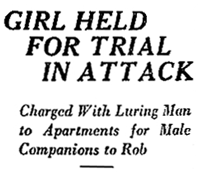
 August 19, 1927
August 19, 1927
Los Angeles
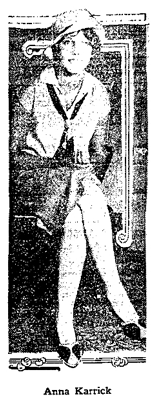 All the noir hallmarks here: a destitute, starry-eyed country girl, the shifty grifter she befriends, a rube with some dough in his pocket, a classic con, the crummy apartment hotel and a dark city.
All the noir hallmarks here: a destitute, starry-eyed country girl, the shifty grifter she befriends, a rube with some dough in his pocket, a classic con, the crummy apartment hotel and a dark city.
Anna Karrick, 22, ran away from her Illinois farm home to win fame in pictures, but found herself down and out.
At a dance, she met a nice guy, Phillip Linker, of 1327 West Fourth Street. She persuaded him to come back to her 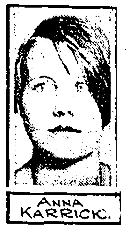 place at 532 South Fremont Avenue (one imagines it didn’t take all that much persuasion). Once there, in the hallway, thoughts of ingress dancing in Linker’s head, he is brained by a rolling-pin, wielded by one Jess F. Waller. Linker wakes up in a taxicab, lightened of seven dollars and other valuables.
place at 532 South Fremont Avenue (one imagines it didn’t take all that much persuasion). Once there, in the hallway, thoughts of ingress dancing in Linker’s head, he is brained by a rolling-pin, wielded by one Jess F. Waller. Linker wakes up in a taxicab, lightened of seven dollars and other valuables.
Waller and Karrick are thrown into County and charged with robbery and ADW. Anna told the court today about her relationship with Waller, sure, but denied knowing he’d be there with her rolling-pin.
Sadly the Times didn’t see the need to print the trial’s outcome, and because there’s no Anna Karrick listed in imdb, we must sadly assume she never broke through Hollywood’s gates.
 532 South Fremont (now site of Glossy Black Tower, left) may be long gone, but it was a fun place while it lasted. In May 1929, Filipino nationals Cal Blanco and Ceferino Sandries argued over women with some sailors from the USS Colorado, when Blanco announced, “I’m going to kill all you sailors,” and so sailor Clyde Forehand shot them both dead; July of 1929 saw a riot there involving thirty sailors and six women, at which two women and seven men were booked on suspicion of robbery; Jack Wilson and Clark Falcon, leaders of a gang of automobile plunderers, were arrested with their booty here in February, 1932; in September 1935 Robert Honchell, a 25 year-old taxi driver, was having a drinking party with his pal Edward Folder, a 29 year-old unemployed café worker, when a woman showed up with her infant daughter—Folder’s insistence on taking the child out for candy started a quarrel, and Folder ended up stabbed mortally in the chest by Honchell…you get the idea.
532 South Fremont (now site of Glossy Black Tower, left) may be long gone, but it was a fun place while it lasted. In May 1929, Filipino nationals Cal Blanco and Ceferino Sandries argued over women with some sailors from the USS Colorado, when Blanco announced, “I’m going to kill all you sailors,” and so sailor Clyde Forehand shot them both dead; July of 1929 saw a riot there involving thirty sailors and six women, at which two women and seven men were booked on suspicion of robbery; Jack Wilson and Clark Falcon, leaders of a gang of automobile plunderers, were arrested with their booty here in February, 1932; in September 1935 Robert Honchell, a 25 year-old taxi driver, was having a drinking party with his pal Edward Folder, a 29 year-old unemployed café worker, when a woman showed up with her infant daughter—Folder’s insistence on taking the child out for candy started a quarrel, and Folder ended up stabbed mortally in the chest by Honchell…you get the idea.

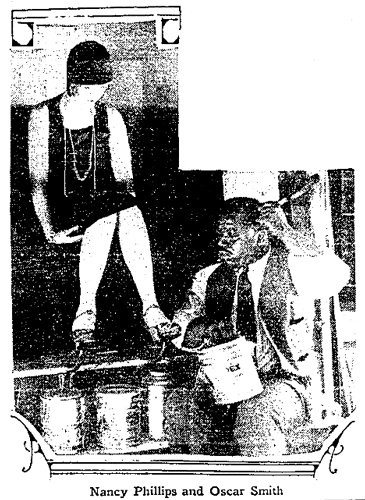
 You jazz-age dames sure make life tough for us workingmen! Oscar Smith, veteran bootblack at the Paramount Studio, has been compared by the Times to no less than a modern Rembrandt.
You jazz-age dames sure make life tough for us workingmen! Oscar Smith, veteran bootblack at the Paramount Studio, has been compared by the Times to no less than a modern Rembrandt. 
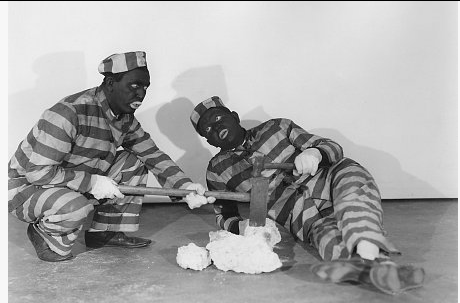

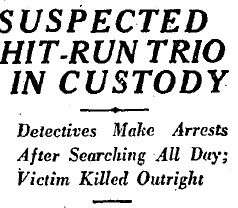


 have feet as large as men’s are now”, said Mr.
have feet as large as men’s are now”, said Mr. 




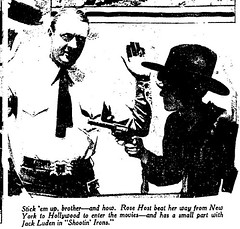 Luden. See – that’s Rose in the photograph, nothing more than a silhouette. Her part was so small she wasn’t even mentioned in the credits, and her Hollywood dreams ended with one picture. Rose Host the actress was not heard from again.
Luden. See – that’s Rose in the photograph, nothing more than a silhouette. Her part was so small she wasn’t even mentioned in the credits, and her Hollywood dreams ended with one picture. Rose Host the actress was not heard from again. 

 Why, no! He”™s been the victim of the
Why, no! He”™s been the victim of the 


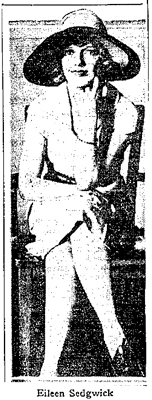
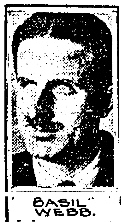 June 24, 1927
June 24, 1927